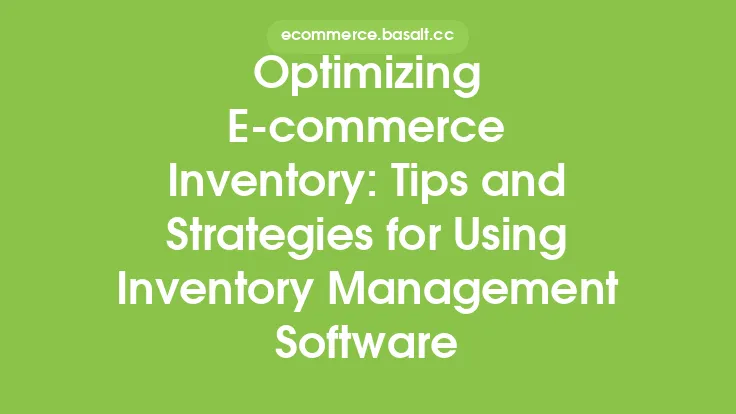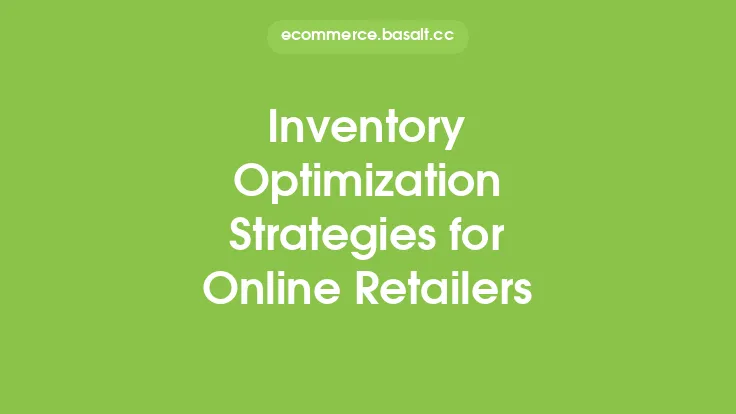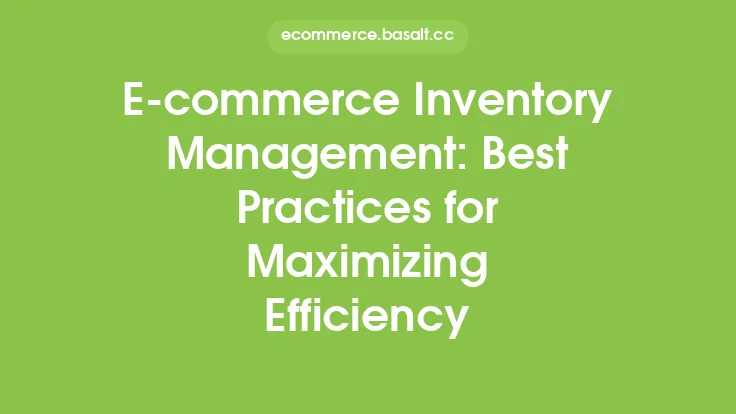To optimize inventory levels for maximum profit, it's essential to understand the delicate balance between having enough stock to meet customer demand and avoiding overstocking, which can lead to unnecessary costs and reduced profitability. Inventory optimization is a critical component of e-commerce strategies, as it directly impacts the bottom line of online retailers. In this article, we'll delve into the world of inventory management and explore the key principles and techniques for optimizing inventory levels to maximize profit.
Understanding the Costs of Inventory
Inventory costs are a significant expense for e-commerce businesses, and understanding these costs is crucial for optimizing inventory levels. The main costs associated with inventory include the cost of goods sold, storage and handling costs, shipping and transportation costs, and inventory carrying costs. The cost of goods sold is the direct cost of purchasing or producing the products, while storage and handling costs include the expenses of storing and managing inventory in a warehouse or distribution center. Shipping and transportation costs are the expenses associated with moving inventory from the supplier to the warehouse and then to the customer. Inventory carrying costs, on the other hand, include the costs of holding inventory, such as storage, insurance, and opportunity costs.
Analyzing Demand and Supply
To optimize inventory levels, e-commerce businesses need to analyze demand and supply patterns. Demand analysis involves studying historical sales data, seasonal trends, and market trends to forecast future demand. This analysis helps businesses to identify peak sales periods, slow-moving products, and opportunities to increase sales. Supply analysis, on the other hand, involves evaluating the lead time, reliability, and capacity of suppliers to ensure that inventory is replenished in a timely and efficient manner. By analyzing demand and supply patterns, businesses can identify opportunities to optimize inventory levels, reduce stockouts, and minimize overstocking.
Setting Optimal Inventory Levels
Setting optimal inventory levels is a critical step in optimizing inventory for maximum profit. The optimal inventory level is the level that balances the cost of holding inventory with the cost of stockouts. To set optimal inventory levels, businesses need to consider factors such as demand variability, lead time, and supplier reliability. One popular method for setting optimal inventory levels is the economic order quantity (EOQ) model, which calculates the optimal order quantity based on demand, ordering costs, and holding costs. Another method is the just-in-time (JIT) inventory system, which involves ordering and receiving inventory just in time to meet customer demand.
Implementing Inventory Optimization Techniques
There are several inventory optimization techniques that e-commerce businesses can implement to maximize profit. One technique is to use a first-in, first-out (FIFO) inventory system, which involves selling the oldest inventory first to minimize waste and reduce inventory carrying costs. Another technique is to implement a drop shipping system, which involves shipping products directly from the supplier to the customer, eliminating the need for inventory storage and handling. Businesses can also use inventory optimization software to analyze demand and supply patterns, set optimal inventory levels, and automate inventory replenishment.
Monitoring and Adjusting Inventory Levels
Monitoring and adjusting inventory levels is an ongoing process that requires continuous analysis and evaluation. E-commerce businesses need to regularly review sales data, inventory levels, and supplier performance to identify opportunities to optimize inventory levels and reduce costs. By monitoring inventory levels and adjusting them as needed, businesses can minimize stockouts, reduce overstocking, and maximize profit. Additionally, businesses can use data analytics and inventory optimization software to identify trends and patterns in demand and supply, and make data-driven decisions to optimize inventory levels.
Conclusion
Optimizing inventory levels for maximum profit is a critical component of e-commerce strategies. By understanding the costs of inventory, analyzing demand and supply patterns, setting optimal inventory levels, implementing inventory optimization techniques, and monitoring and adjusting inventory levels, e-commerce businesses can minimize costs, maximize profit, and stay competitive in the market. As the e-commerce landscape continues to evolve, inventory optimization will remain a key factor in determining the success of online retailers. By focusing on evergreen information and best practices, businesses can develop a robust inventory optimization strategy that drives growth, profitability, and customer satisfaction.





